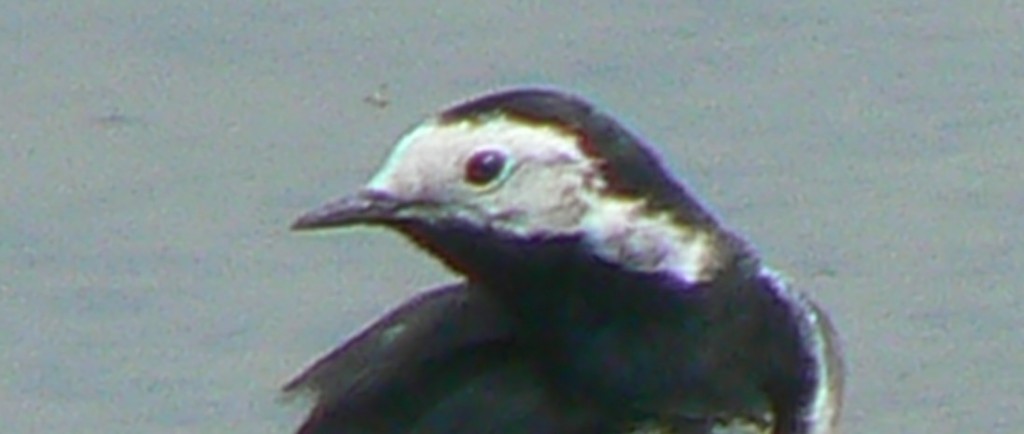
[231] Motacilla alba yarellii, Pied Wagtail
Introduction
Motacillais a genus of small passerine birds called Wagtails.
Motacilla alba is black and white and is called the White Wagtail, except in the UK where we have the subspecies Motacilla alba yarelli, known as the Pied Wagtail. Juveniles are grey and white.
Motacilla cineraria is more yellow in appearance and is called the Grey Wagtail.
Motacilla flava, the Yellow Wagtail is a brighter yellow colour, and Motacill citreola, the Citrine Wagtail is even brighter yellow.
I have listed these in order of rarity. The Pied Wagtail is common and widespread in Britain and the Citrine Wagtail is rare and very localized.
Taxonomy
Kingdom – Animals
Phylum – Chordates
Class – Aves (Birds)
Order – Passeriformes
Family – Motacillidae (Wagtails and Pipits)
Genus -Motacilla
Species – Motacilla alba
Scientific Name – Motacilla alba yarelli
The species Motacilla is probably polyphyletic.
Name
You only have to look at these birds to see why they are called Wagtails but the species names are more difficult to explain. In Britain it’s best to consider them as being named from the predominant colour of the head – as the Grey Wagtail that looks yellow actually has a grey head. Outside the UK each species has several geographically separate subspecies with colour variations that don’t make identification any easier.
Motacilla is the Latin name for these birds, a diminutive of ‘motare’, to move about. From Mediaeval times -cilla has been falsely taken to mean tail. Alba, cineraria and flava mean white, ashy grey and yellow, and citreola is associated with the lemon colour of citrus.
[William Yarrell (1784-1856) was an English zoologist who wrote the standard reference book of British ornithology in 1843. Several species are named after him.]
The word pied meaning black and white (or sometimes two other colours) comes from [265] the Magpie. It is very common in the names of animals.
Description
Motacilla alba, the White Wagtail, has about ten distinct subspecies but is almost certainly polyphyletic. Convergent evolution has led to subspecies that appear more closely related than they are and the various subspecies of Motacilla may eventually be regrouped at the species level.
The various subspecies of Motacilla alba cover all of Eurasia but we can consider just the UK subspecies, Motacilla alba yarellii, known as the Pied Wagtail. This is much the most common wagtail species found in Britain.
It’s a small passerine bird, similar in size to many common woodland and garden birds but with a longer tail. It does often wag its tail when standing. It is black and white. The underparts and the sides of its face are white, with a prominent dark eye in the centre of the white cheeks.









Juvenile birds have grey instead of black but are otherwise similar.


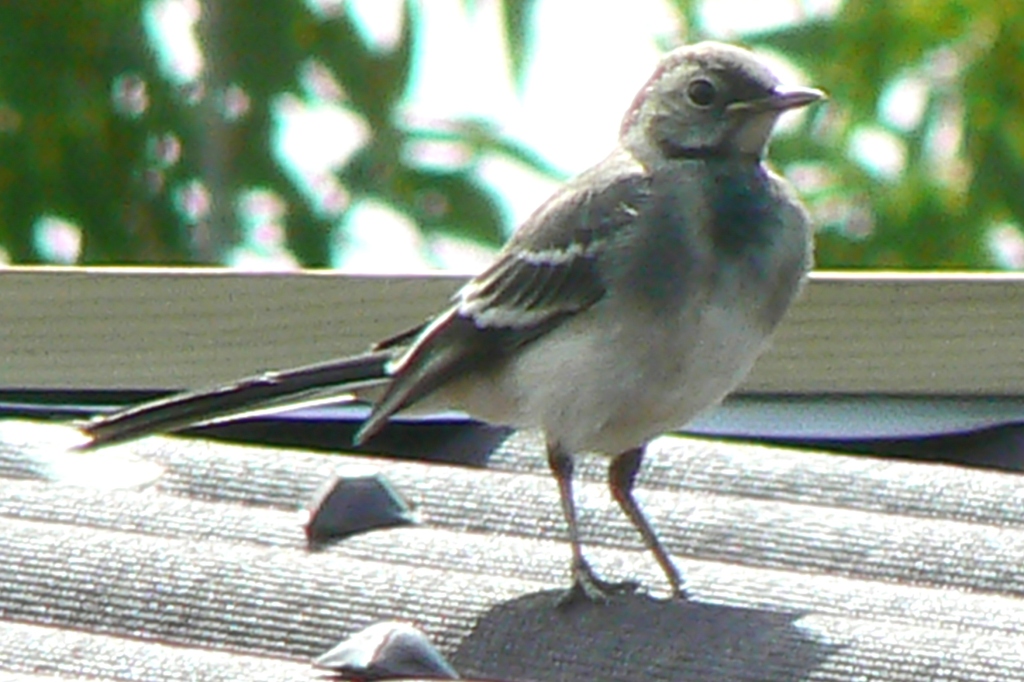

It seems to like water and is often seen by rivers or at the seaside.

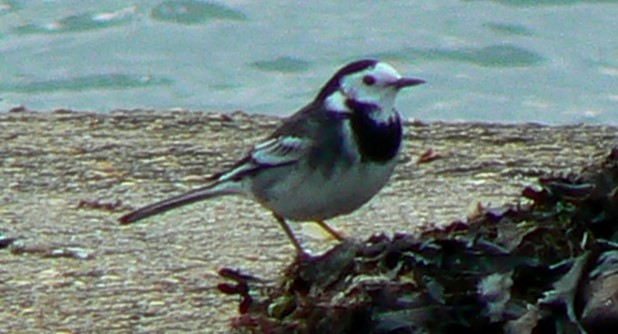

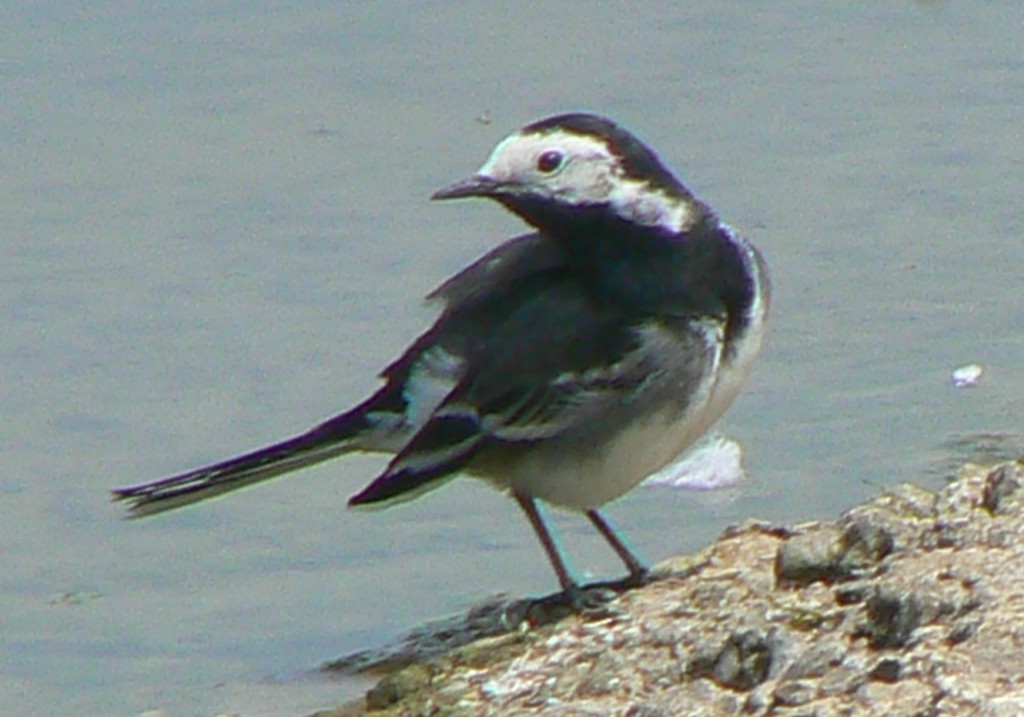


Habitat
The subspecies Motacilla alba yarelliiis common and widespread in the UK. Other subspecies, called White Wagtails are found over Europe and parts of Asia and northern Africa.
They live to some extent in towns. In winter they are known to form large flocks of several hundred birds to roost in trees in central Cheltenham (and presumably in other locations.)
Other Notes
The Pied Wagtail is relatively common but it is one of the most difficult birds to photograph well. Most birds are aware enough of people to maintain a comfortable distance and Pied Wagtails have their own ideas of what is a safe distance – and it’s further away than many other small birds. If you get too close, they walk, hop or fly away. They also rarely keep still. And they don’t visit bird feeders.
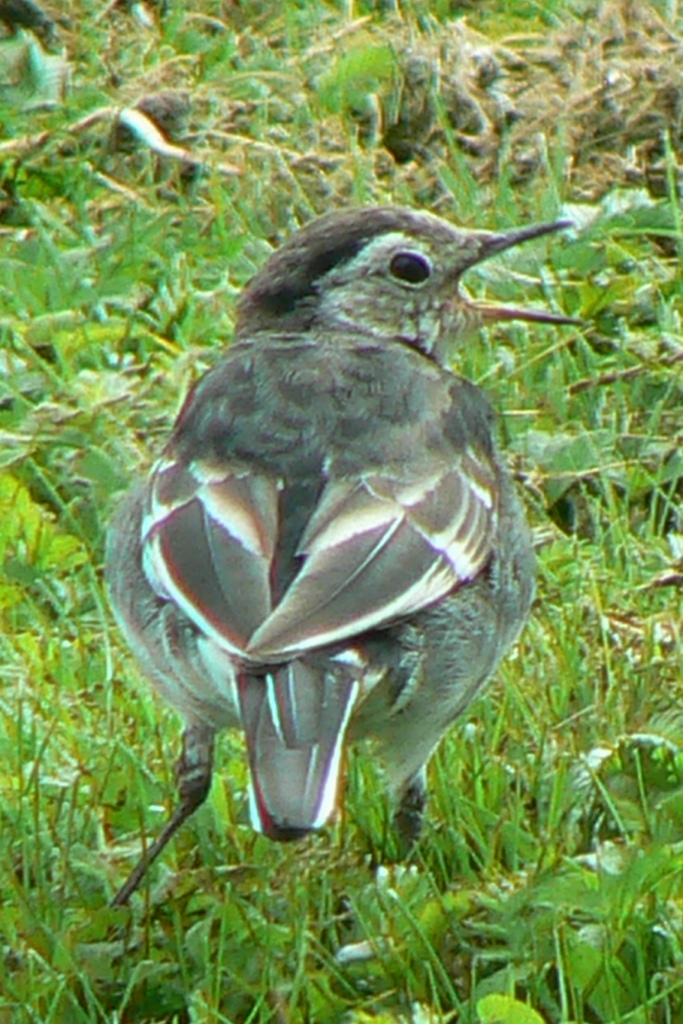
See also
Motacilla cinerea, the Grey Wagtail, looks at first like a yellow version of the Pied Wagtail but it is only the underparts that are yellow, sometimes partly buff or white. Its back and head are from light grey to dark grey with a white eye stripe.
It has a slightly longer tail than the Pied Wagtail and its wagging tail motions are more evident and this bird tends to be more associated with water environments such as river banks.





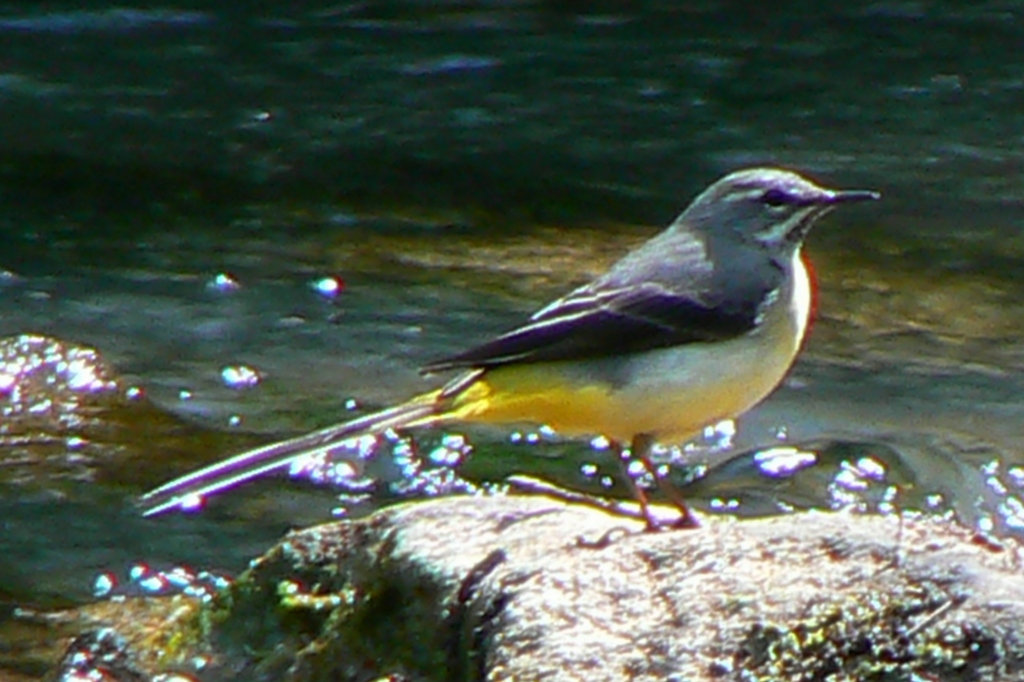

The next pictures show a mother her nearly adult chick.
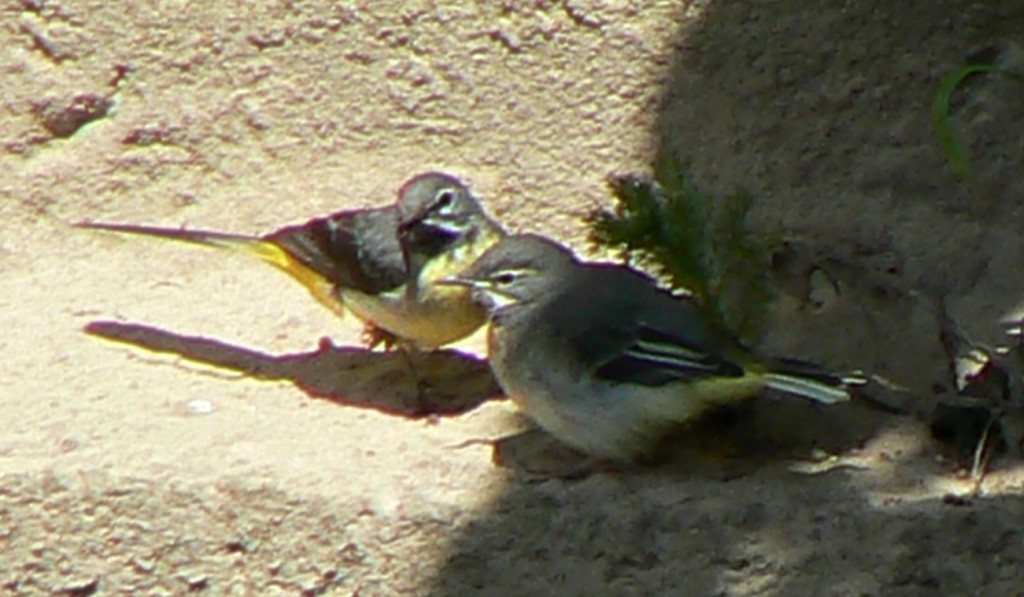
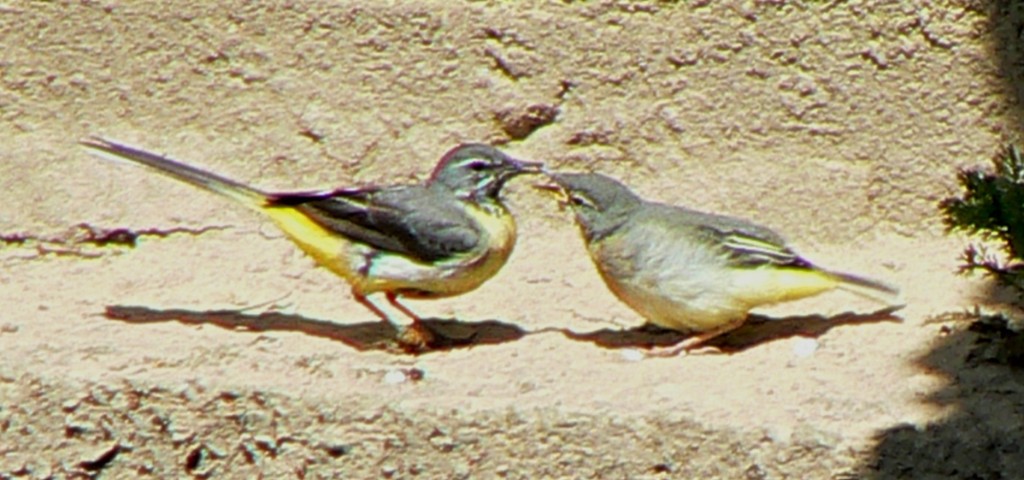
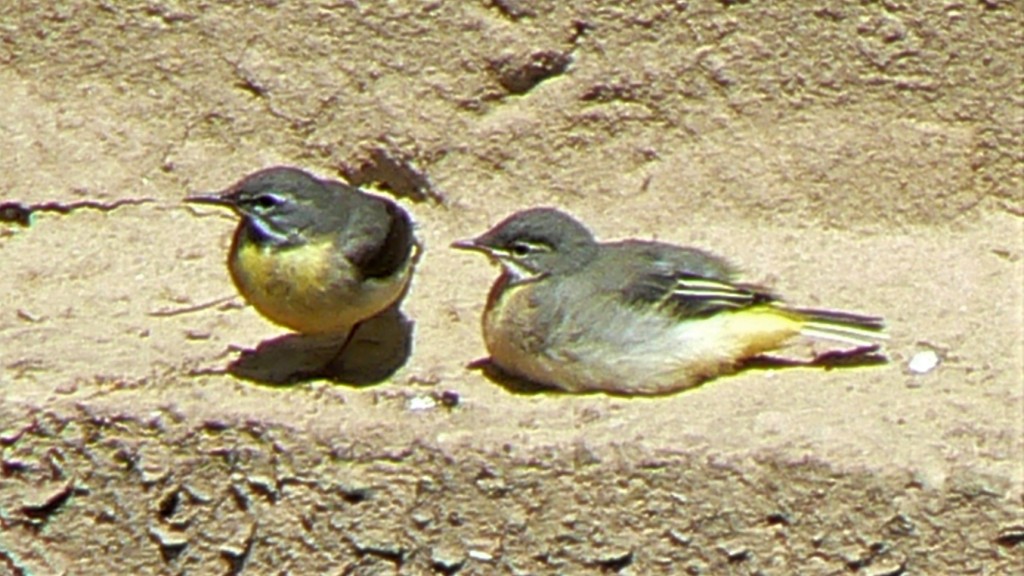
It is found over Western Europe and is widespread in the UK although less common than the Pied Wagtail.
Motacilla flava, the Yellow Wagtail, has solid bright yellow underparts and a yellow tinge to its back. It’s a relatively rare summer visitor to parts of England.
Motacilla citreola, the Citrine Wagtail, is similar to the Yellow Wagtail. The yellow colour extends to most of its head. Its normal distribution is the northeast of Europe but occasional vagrants are sometimes seen on the coasts of Southwest England.
Anthus pratensis, the Meadow Pipit, is a close relative of the Wagtails that I haven’t included.
